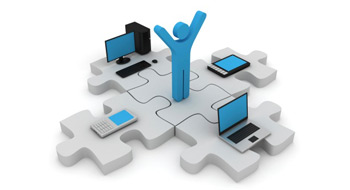

Communications must evolve to become more than a pretty poster in a lunch room or a piece of ad mail to be sent to and largely ignored by plan members.
Certainly both outreach efforts were at one point an effective and cost-efficient way to share a sponsor’s message with their team. But today’s plan members—millennials in particular—have been conditioned to search online via smartphones and to a lesser extent today, tablets. Even the lowly laptop is suffering the stigma of being referred to as simply a more updated abacus.
Read: Why you need a communication policy
Carriers and other benefits services providers, claims adjudicators and third-party administrators ignore mobile platforms at their peril and must be prepared to devote significant resources to make sure no member is left behind. The smartphone—in all its guises and platform varieties (iOS, Android and BlackBerry) is quickly becoming the tool of choice for all personal and professional interactions.
As millennials increase in numbers and their presence in the market gradually outpaces boomers and gen Xers, every effort will have to be made to engage them in becoming better purchasers of health care services and better stewards of their own health. The rest of us—if we haven’t done so already—better get savvy with the technology and hang on for the ride.
A 2014 Aon Hewitt study published in the Society for Human Resource Management’s HR Magazine stated millennials are concerned about their benefits plans and want to be engaged by their employers and even by their direct managers to help them manage their health. The study went further to say more than 55% of respondents weren’t so much concerned about avoiding illness but were more interested in managing their fitness, stress and sleep habits to maintain a better physique and youthful appearance.
Read: 4 top communication trends
Believing that good habits are built early and are best maintained over a longer period of time would indicate that the results are desired no matter the motivation. The challenge is how advisors can develop all these great messages to engage their members if there’s no way to make sure the message is actually being heard—or perhaps better yet—downloaded, viewed and shared.
Content may be king but the conduit is just as vital.
Carriers are rushing to embrace this trend. Sponsors need to make sure their benefits providers can handle claims submission, claims management and real-time plan design look-up via smartphone—no matter the member’s physical whereabouts or time of day. Can a member access all features of their plans online or only a few? Can sponsors and administrators effectively use smartphones as a tool to share important news with their members in a way that has a higher likelihood of being accepted?
Metaphorically speaking, if an inspiring idea was created in an ivory tower and there was no member around to learn about it, would it still be sound?
Using mobile technology to enhance the health of all plan members is paramount. The power to search for prescribed drugs and treatments while the member is in the doctor’s office, using a smartphone will no doubt help members understand their plan’s coverage limitations and special authorization requirements in real time. This could conceivably help achieve better health outcomes in a shorter time periods by engaging patient and physician in a more open and immediate dialogue. This mobile resource might also help members understand generic and therapeutic options at the pharmacist’s counter.
Read: How to cut back benefits without making employees mad
All these wonderful resources are of much-diminished value if limited to desktops and other clunky online tools that can’t fit into a pocket or purse.
In short, connecting not only your millennial members but all plan members is becoming more important in the search to find the best benefits provider to help engage them in becoming better consumers of healthcare.
